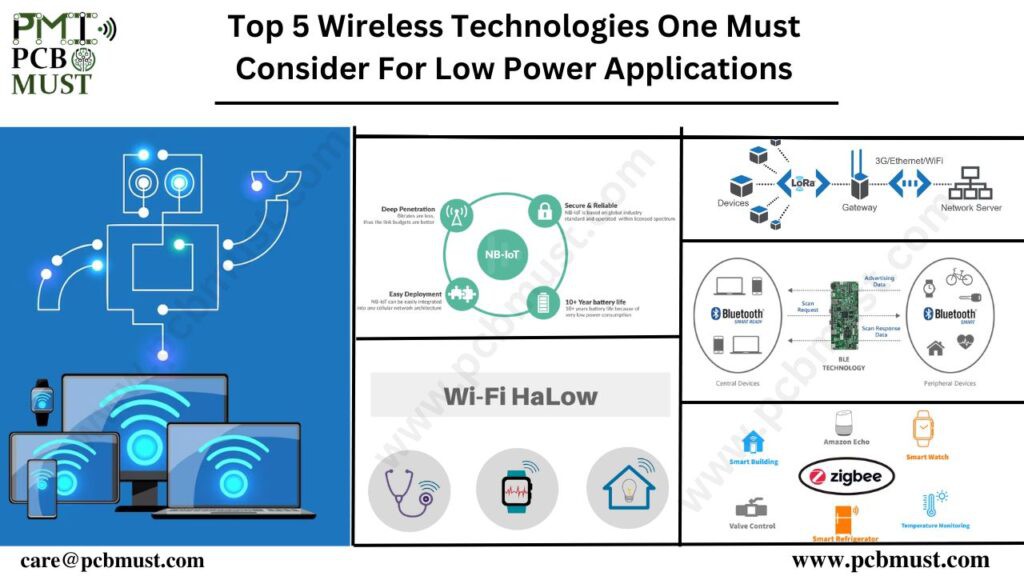Wireless technologies have revolutionized the way we communicate and interact with devices. With the increasing demand for low-power applications, wireless technologies have also evolved to provide low-power communication solutions. In this article, we will discuss the top five wireless technologies that one must consider for low-power applications.

Bluetooth Low Energy (BLE):
- BLE is a wireless technology designed for low-power applications that require short-range communication. It offers low power consumption, high data rate, and secure communication. BLE is widely used in applications such as wearables, smart home devices, and industrial sensors.
Zigbee:
- Zigbee is a low-power wireless technology designed for applications that require low data rate and long battery life. It operates on the IEEE 802.15.4 standard and offers reliable communication in noisy environments. Zigbee is widely used in home automation, smart metering, and industrial automation applications.
LoRaWAN:
- LoRaWAN is a wireless technology designed for long-range communication with low power consumption. It operates in the sub-gigahertz frequency range and offers excellent coverage in urban and rural areas. LoRaWAN is widely used in applications such as smart city, smart agriculture, and asset tracking.
Wi-Fi HaLow:
- Wi-Fi HaLow is a wireless technology designed for low-power and long-range communication. It operates in the 900 MHz frequency range and offers high data rate and secure communication. Wi-Fi HaLow is widely used in industrial automation, smart home, and healthcare applications.
Narrowband IoT (NB-IoT):
- NB-IoT is a wireless technology designed for low-power and long-range communication. It operates in the licensed spectrum and offers secure communication and excellent coverage in hard-to-reach areas. NB-IoT is widely used in smart city, smart agriculture, and asset tracking applications.
In conclusion
choosing the right wireless technology for low-power applications requires careful consideration of range, data rate, power consumption, and security requirements. By keeping these factors in mind, you can ensure that the wireless technology you choose will meet your project requirements and provide the functionality you need.
Tags:-High Speed PCB Design, PCB Design
About The Author
As the founder of PCB Must Innovations, Avi Gupta is passionate about electronics design and innovation. With a strong background in the industry, he have been involved in numerous successful projects, helping clients bring their ideas to life. He enjoys pushing the boundaries of technology,...
 Avi Gupta
Avi Gupta
Discussions
Become a Hackaday.io Member
Create an account to leave a comment. Already have an account? Log In.